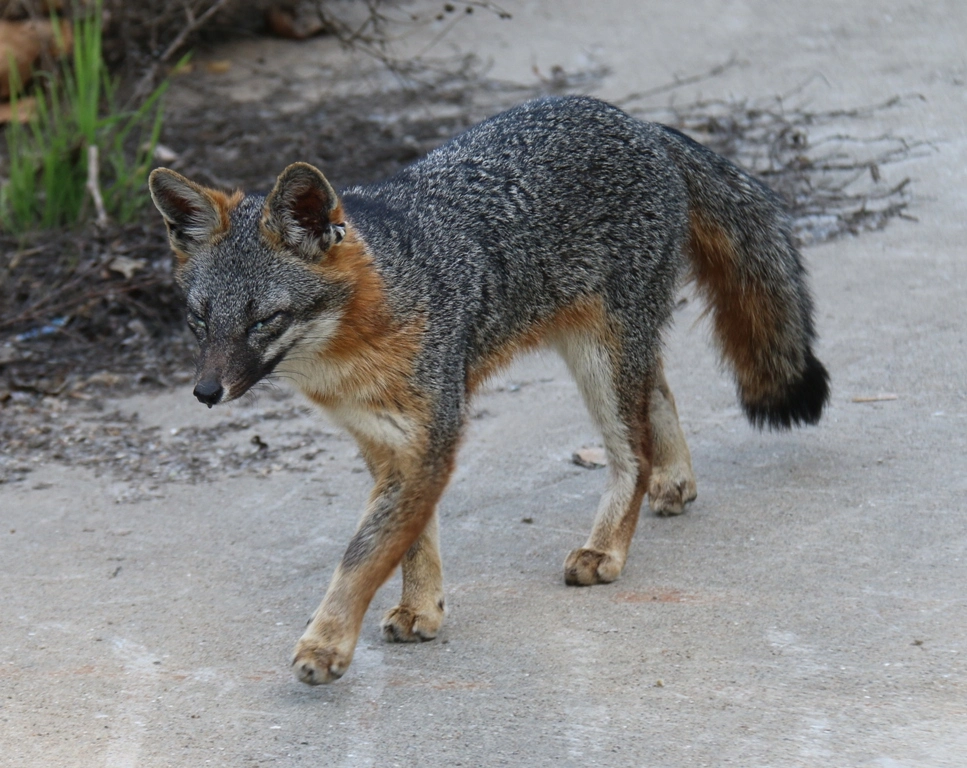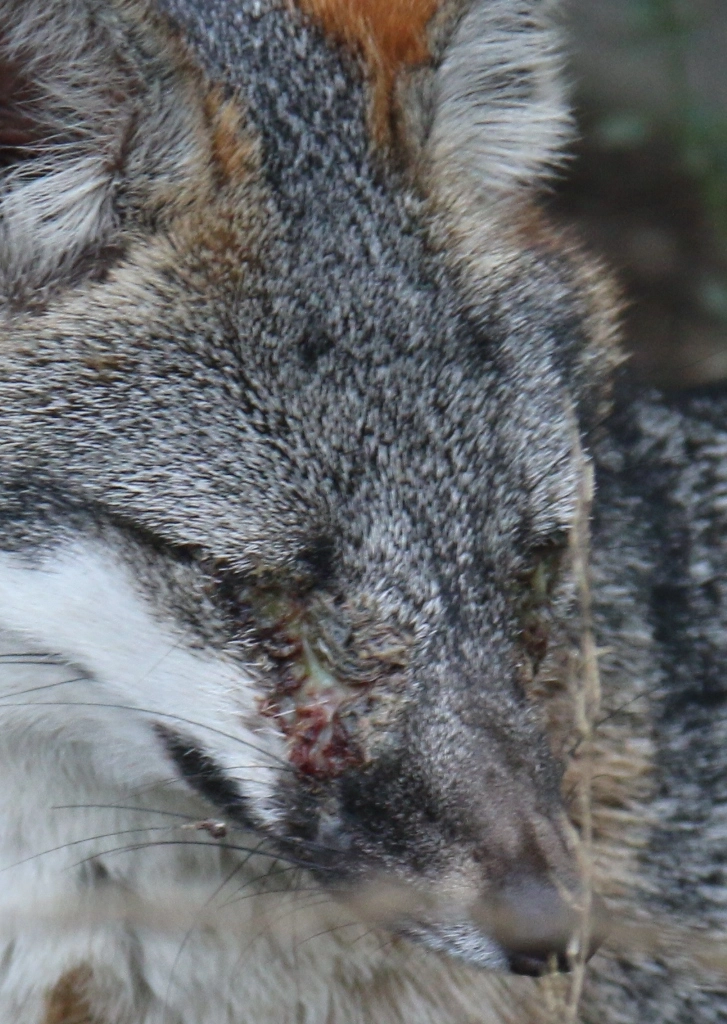Disease and the Gray Fox
by William C. Leikam
President, CEO & Co-founder, Urban Wildlife Research Project

For the past few months nothing novel, nothing out of the routine has happened over in Foxland. The one exception is that the gray fox pair have changed their pattern of behavior. They have changed the trails they once took on a nightly basis for months. I’d wager that they’ve gone to a new hunting ground, likely out into the big floodplain. The place where they nap during the course of the day remains unchanged. This is typical gray fox behavior.
Since there’s nothing newsworthy to report this month, I have decided to fall back on the kinds of articles that I wrote before Big Eyes and her mate Laimos arrived along the creek. For those who are new to this report, I told stories of the foxes and in January through March of 2017 I wrote about the big die-out at the Palo Alto Baylands Nature Preserve where 25 gray fox succumbed to canine distemper. Now four years later and four years of moving the Urban Wildlife Research Project (UWRP) onto a strong sustainable path going forward, let’s take a look back at canine distemper, the die-out and its effect upon the UWRP.

Prior to Tuesday, January 03, 2017 4:22 PM, canine distemper was not a part of my lexicon. Once we received the final necropsy report from the lead veterinarian for the California Department of Fish and Wildlife, her report stated that the die-out was due to canine distemper with a few other viruses like toxoplasmosis tossed in as well. That woke me up. That and a few other bits of information told me that the ocular (eye) drainage that we had seen over the course of a couple of years; a puss-like drainage from the corner of the eyes, was due to distemper.
That led me back into my photo archives of these foxes, back as far as 2012. I found several pictures of Mama Bold when she was but a year old and not yet teamed up with Gray, showing that drainage in the corner of her left eye. It dawned on me that her immune system was strong enough to hold that virus in check until it simply overwhelmed her some five years later. The last time I saw her alive was on June 18, 2016, five months before the other foxes died.
Section III
Gray Fox, Baylands Goals
Within the permit that allows the Urban Wildlife Research Project to conduct its study of the behavior of the gray fox at the Palo Alto Baylands Nature Preserve, the objectives covered area:
- Monitoring of urban gray fox Denning sites in Palo Alto Baylands.
This is being accomplished during the period when the gray foxes use a den site. It is one of the prime locations for gathering most of the behavioral data of the litter and for adults alike.
- Assessment of status and population trends of Baylands urban gray foxes
Since January 2019 a pair of resident gray foxes have claimed territory at the Palo Alto Baylands Nature Preserve.
- Identification of habitat features that promote the presence of urban gray foxes
After considering this and talking with people who know how to restore habitats, we need to assess what kinds of plants, including the Alkaline Salt Bush, would grow best along the edge of the saltwater channel and alongside the marsh. We need to grow a permanent habitat that contains the corridors and plant it as soon as possible. We’ll keep an eye on this as this is a critical link between the southern region of the Baylands and the northern region.
- Assessment of reproductive success and identification of factors that promote successful reproduction
Open up the pinch-point along Matadero Creek by developing thickets that link one area to another, instead of the present “islands”.
- Identification and assessment of possible dispersal travel routes.
Presently there can only be guesses as to dispersal travel routes. We intend to make this important question much more concrete when we attain our collaring/take/capture permit from the Department of Fish & Wildlife.





